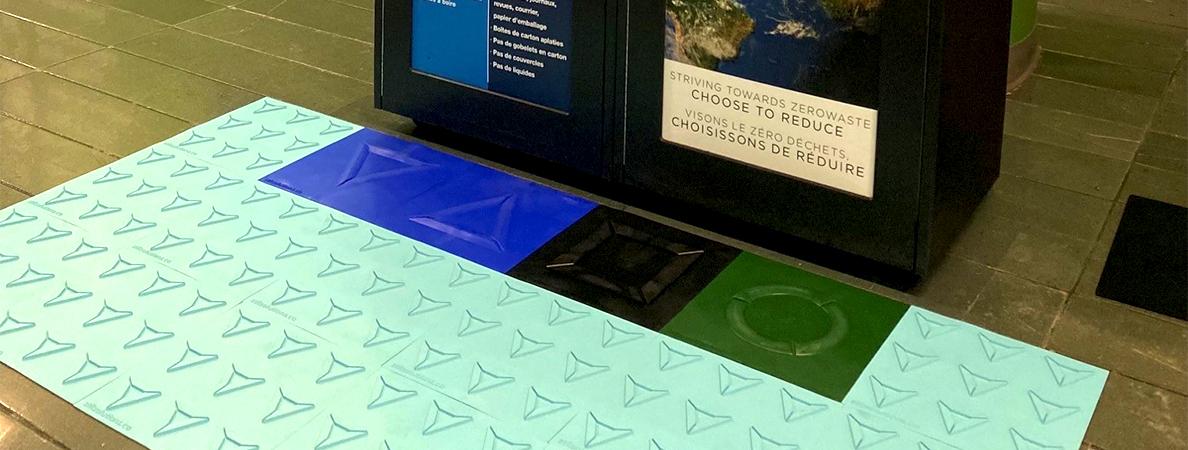
Sustainability is everyone’s responsibility. Mohawk graduate, Emilee Schevers, agrees.
During her final semester in the Early Childhood Education program, Emilee came across a social media post for the Sustainability Office’s Sustainability Initiatives Fund (SIF) Ideabank that calls on students to submit projects that could enhance sustainability at Mohawk. On a whim, Emilee sent in the STIL Solutions WasteFinder project in an effort to bridge sustainability and accessibility on Campus.
The STIL Solutions WasteFinder system consists of tactile and high contrast indicators that assist individuals who are blind or experience low vision to independently and effectively dispose of their waste in public spaces.
Created by Hillary Scanlon, WasteFinder uses a Vicinity Indicator that lets individuals know when they are within a certain distance of the bins as well as Stream Indicators that help users determine which waste stream they are directly in front of. This two-part system uses a series of raised symbols on the floor surrounding the waste disposal unit that is easily detected underfoot or through a mobility device. This also ensures the user never needs to touch the waste bins in search of braille or other tactile indicators or feel the need to get closer to the waste disposal unit to read its signs.
Legally blind herself, Emilee is a strong disability advocate. Over the last three years, she has run her own social media campaign called TruFaces, an online organization for people with disabilities to share stories, bring awareness to disabilities, and connect with individuals facing similar challenges.
Emilee also joined Hillary four years ago in the design process for what is now the STIL Solutions WasteFinder. The idea was motivated by the frustration of inaccessible built environments, such as visually depicted waste sorting systems after Hillary suddenly and unexpectedly lost her vision.
Though Emilee’s main priority is disability advocacy, she does her part for sustainability by reducing single-use plastics where she can, recycling, and taking public transit or walking as much as possible. While living in Hamilton and attending Mohawk College, Emilee says being in walkable proximity to accessible public transit and other important locations was hugely important for her as she is not able to drive.
From brainstorming better ways for individuals with vision disabilities to navigate waste sorting systems to having the WasteFinder project approved through the SIF Ideabank, Emilee says it is a full-circle moment.
Emilee says this experience has changed her perspective to “let’s consider sustainability and accessibility going hand in hand”.
WasteFinder will soon be piloted at 3 locations across Mohawk College’s Fennel Campus:
- Cafeteria Waste Station – lower level, C-Wing
- C-Wing main entrance between Tim Horton’s and McIntyre Theatre
- J-Wing hallway, outside International Square (Room J137)
The pilot will continue for the next 2-3 years, after which the initiative may be expanded to other locations and campuses. Feedback will also be collected throughout the pilot.
For more information on WasteFinder, visit the project webpage!





